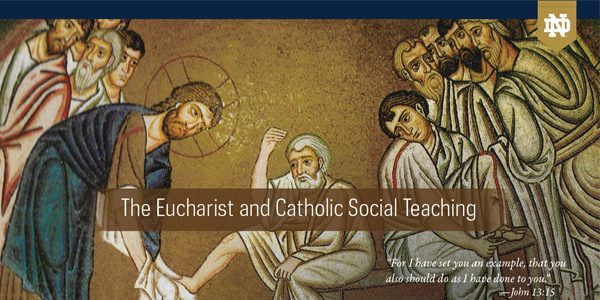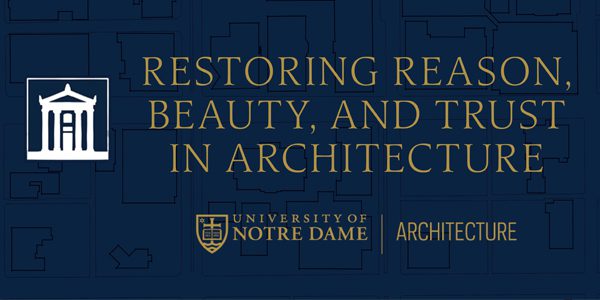Untitled by Agustin Fernandez
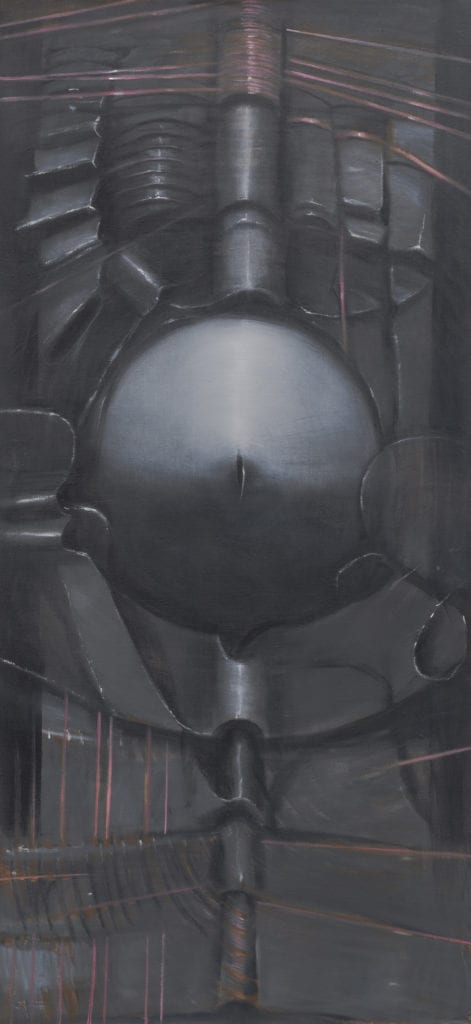
ABOUT THE ARTWORK
Who made it?
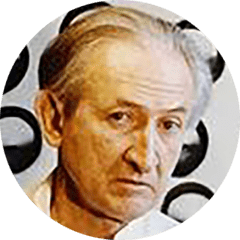
Agustin Fernandez was born in Havana, Cuba, in 1928. He received his early artistic training there at the Academy of San Alejandro but left Cuba soon after graduating for New York City. Fernandez worked in multiple media throughout his career, producing paintings, drawings, graphics, assemblages, sculptures, and artist’s books. His work is known for its ambiguous and precariously balanced forms, surreal juxtapositions, and metallic palette. He found inspiration in the urban environment and the mundane objects and forms that populate its spaces.
Throughout his long and prolific career as an artist, Fernandez was respected as a dedicated professional with a highly unique style and masterful techniques. He is recognized as an outstanding artist of his generation, and his works have been extensively and internationally-exhibited to much critical acclaim. Fernandez had more than 30 solo exhibitions and participated in over 100 group exhibitions around the world during this lifetime.
What’s going on in this work?
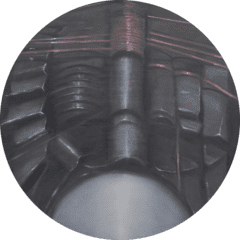
Fernandez’s early works were full of vibrant colors and often contained human figures. As his career progressed, his works became more abstracted and he adopted a more neutral palette. Over time he explored organic versus inorganic forms; human and machine; real and imagined; obsessive and cerebral subject matters in his paintings. In Untitled, Fernandez used a long and narrow vertical canvas to emphasize the column of overlapping black, almost metallic forms. Recalling a spinal cord or a mechanical device, there is implied movement through the shadows and reflections painted. The convex form in the center seems to emerge from the plating surrounding it. While following the red-brown lines that move up from the bottom of the work—almost like wires—disappear behind that circle, and reappear behind the convex form to wrap the topmost cylinder before stretching off the canvas, we are able to explore the full painting. This drawing up of the eye enhances the effect of movement in this mechanically inspired piece.
Take a closer look.
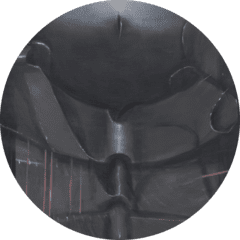
Click on the full image of Untitled above to see a larger version of the work. Look closely at the painting and use these questions to guide your looking. Share your thoughts with your family, a friend virtually, or with us by responding to this email.
- What’s going on in this picture? What do you see that makes you say that?
- Open the larger image of Untitled. Where does your eye go first? Spend a few moments really looking at that spot. What do you notice about it? Does it make your eyes want to travel to a different spot in the painting?
- If you rotate the painting, does it change how you experience it? Why or why not? Did this exercise make you notice something new about the work?
To receive the collection in your inbox, join the Raclin Murphy Museum’s mailing list.
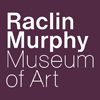
Engage with the Raclin Murphy Museum of Art by exploring their collection through background information and reflection questions. For more information on the collections, please visit the Raclin Murphy Museum of Art website.
Learn MoreJuly 16, 2020

